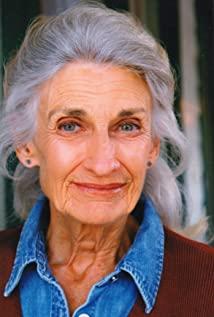Let us first review the ratings of this film by overseas media. "Fall to Hell" has an average score of 83 points in "Metacritic"; "Imdb" also has a score of 7.5 points (25,575 votes); in "Rotten Tomatoes", it has a high score of 92%. Owen Gleiberman of "Entertainment Weekly" said, "Raimi has made the most crazy, fun, and terrifying horror movie in years." Betsy Sharkey of "Los Angeles Times" also said, "With that fire in his belly, Raimi's Drag Me to Hell does everything we want a horror film to do: It is fearsomely scary, wickedly funny and diabolically gross." In the face of such beautiful words, is "Falling to Hell" really that good-looking?
The beginning of "Falling in Hell" is the old-fashioned global logo, with a nostalgic atmosphere. It should be noted that Remy's first two "Ghosts" movies used this logo. To be honest, this logo directly reminds the author of the emotion of watching Jiahe movies when I was young. Those four big red bricks! Immediately afterwards, the film opened with two panning shots: First, the concealed composition was aimed at the old house where the "spiritual meeting" was finally performed, and the film was paved with the posture of the "pre-narrative paragraph". Of course, that big house is not the duplex apartment in "The Grudge". Second, the super-high overhead shot aimed at the car driven by the heroine Christine Brown, as if a kind of fate, firmly restraining the audience's pity for the heroine's destiny.
At the same time, Remy used a lot of oblique composition to create the dilemma faced by the characters in the film. The character who is about to slide out of the screen is full of crisis almost every breath. In addition, the movement of shadows, the scheduling of depth of field (the envelope in Christine Brown's hand in the foreground, the old man in the background), and the small movements exposed in the middle shot (similar to close-ups) all contribute to the film’s thrilling atmosphere. A lot. Especially in the scene of Christine Brown's grave digging, the mirror melted, and the mud in the graveyard was gradually washed away by the warm water sprayed from the shower head. What is commendable is that "Fall to Hell" cleverly connects the audience's perspective with the perspective of the people in the play through Christine Brown's subjective lens. For example: at 1 hour and 21 minutes, the audience can understand Christine Brown's inner moral sense through Christine Brown's scrutiny of various people in the restaurant (a family, a pair of young lovers, and a pair of elderly lovers).
In terms of genre, Remy’s "Fall to Hell" is completely different from the American horror film mode of "Lost" + "Murder" + "Plasma" + "Killing" + "Screaming" that "Texas Chainsaw" opened. . Instead, "Fall in Hell" used the "exorcism" that was popular in the 70s and 80s to sublimate the nostalgia index of the entire movie. The illustrated cartoons at the beginning are a new horror film that clarifies the close-up killing tools. Of course, when it comes to the "Exorcist" model, the 2004 Exorcist: The Beginning and 2005 The Exorcism of Emily Rose both played this card. Is there any difference between "Fall in Hell" and these movies? Objectively speaking, when the two models are similar, Remy pays more attention to pure sensory theory, rather than those mind theory films that use "exorcism" as a gimmick and actually explore the opposition between reason and sensibility, religion and science. .
In the end, the conflicts in the office, the observance of the social system, and the conception of love, "Falling Into Hell" passed by and made a cold sketch of the intrigue of American middle-class life. The source of terrorist incidents is just the ripples of the social system on the destiny of individuals. No wonder, this story of Remy is based on real social news.
View more about Drag Me to Hell reviews











